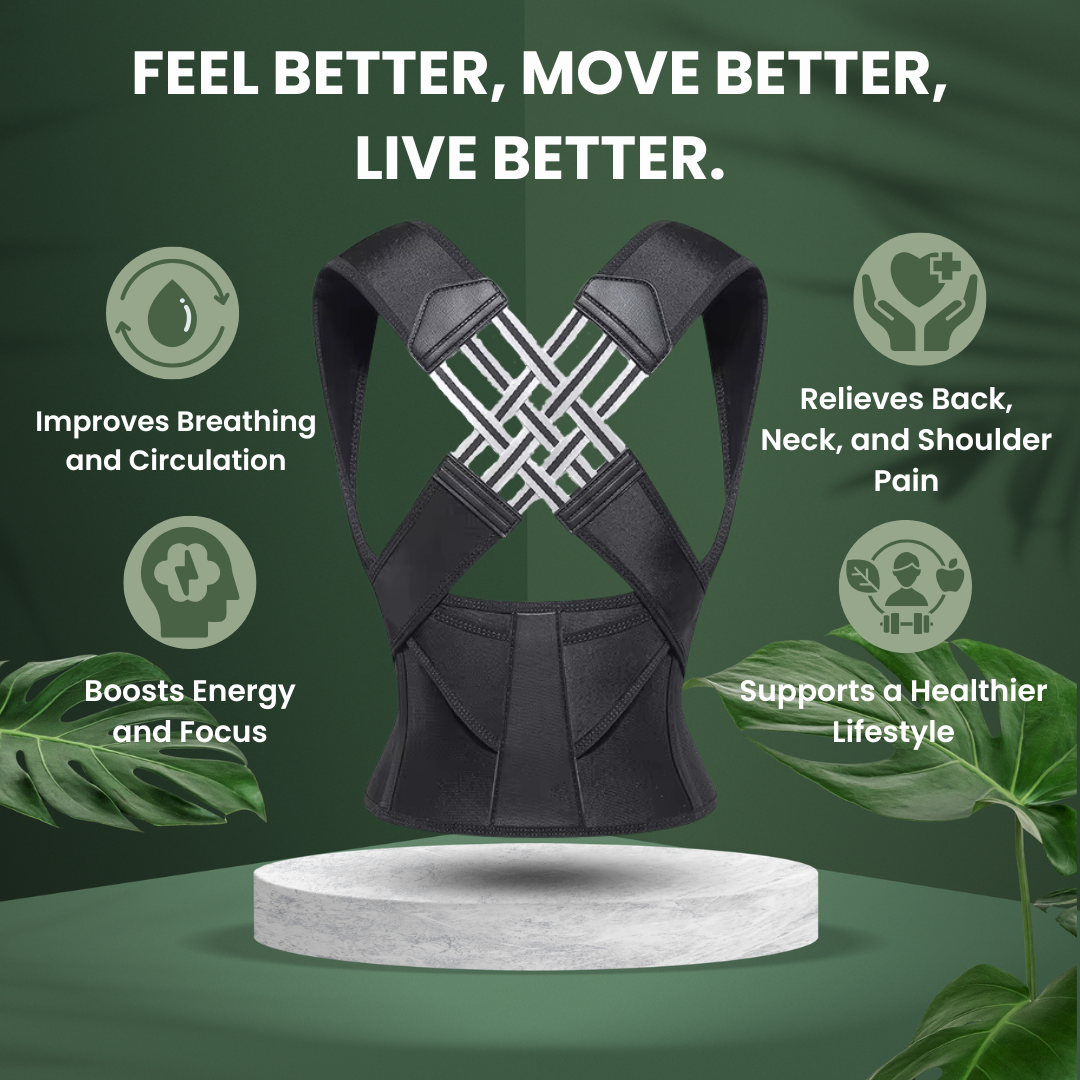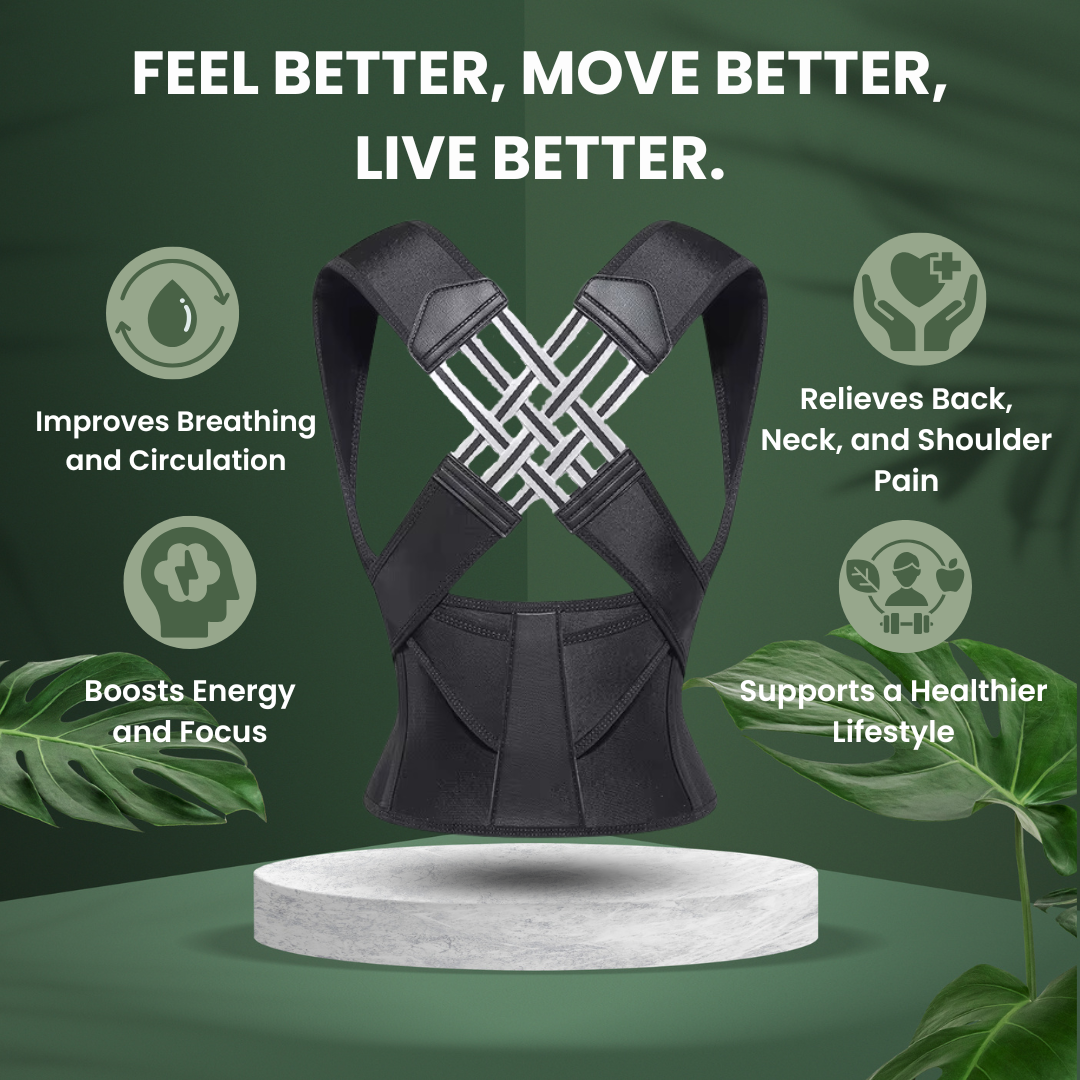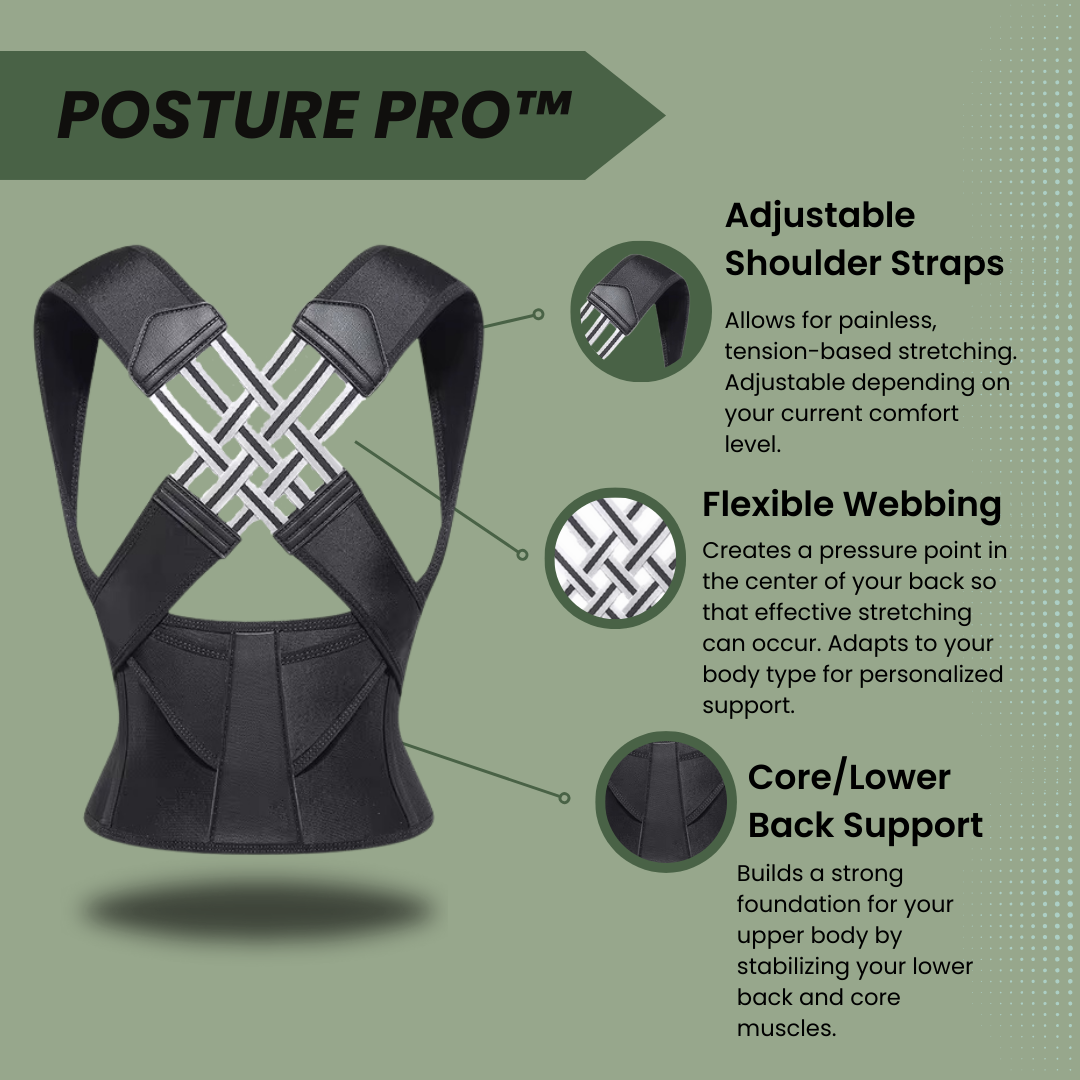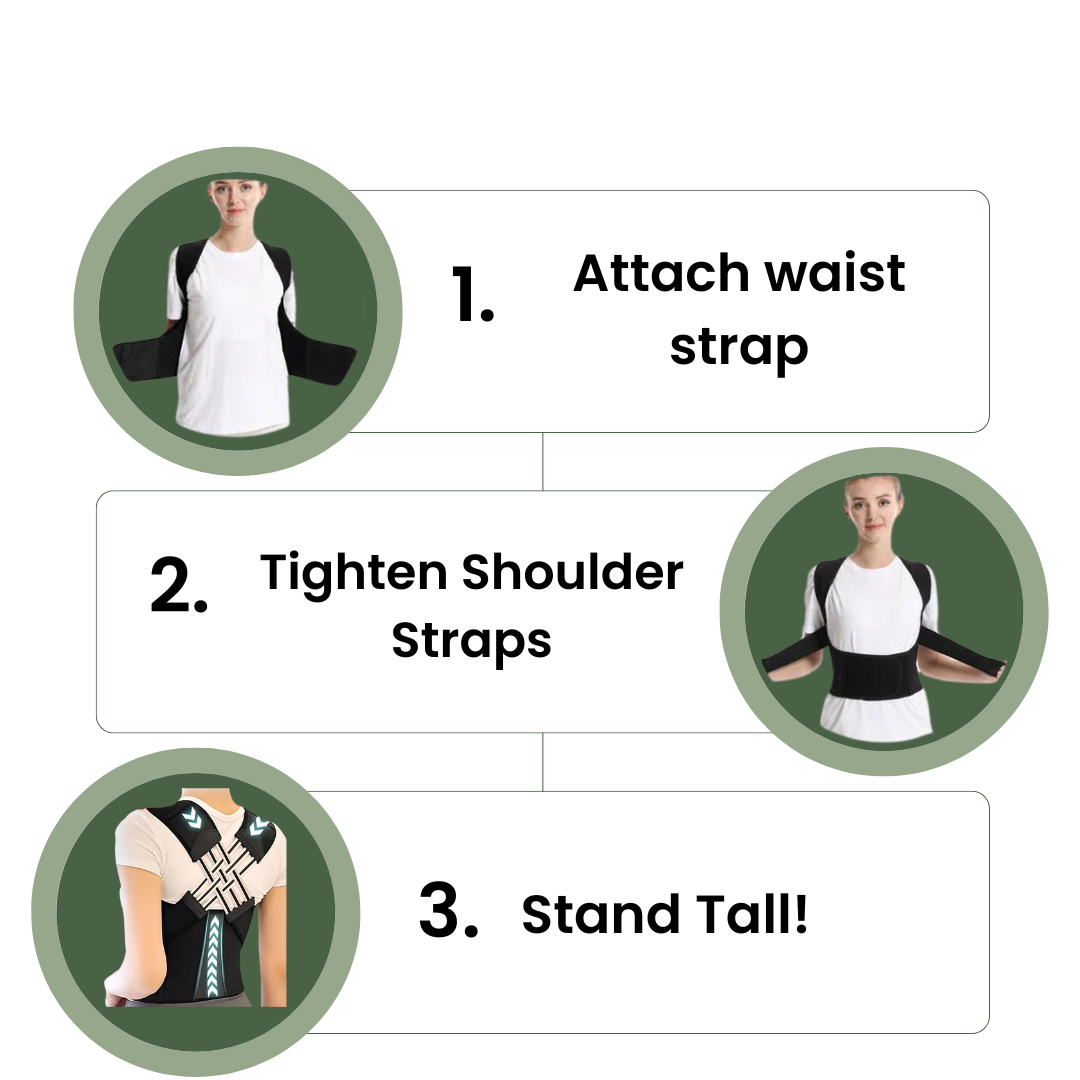Many people struggle with common posture problems every day. Proper posture keeps your spine supported and prevents pain. This blog post will show you ways to fix bad posture issues, from exercises to ergonomics.
Keep reading for helpful tips.
Key Takeaways
- Common posture problems include forward head, rounded shoulders, swayback, kyphosis, and lordosis. Each affects spinal alignment differently.
- Poor posture leads to muscle imbalances, back pain, headaches, and lowered confidence. Over time, it can result in chronic pain and movement limitations.
- Assessing your posture involves checking shoulder level, head position against the shoulders, spine curves, hip alignment while standing or sitting. This helps identify issues early.
- Correct bad posture with core-strength exercises like planks and back extensions; stretches for tight muscles; yoga poses for flexibility; ergonomics for a better workspace setup; postural awareness by observing body positions throughout the day.
- Seeking professional help from doctors, chiropractors or physical therapists is advised if experiencing persistent discomfort due to poor posture. They provide tailored treatments to correct misalignments and improve overall health.
Understanding Common Posture Problems
Understanding common posture problems helps you identify issues in your daily life. Poor posture can lead to discomfort and long-term health complications if not addressed promptly.
The Four Main Types of Posture
The body holds itself in four main types of posture. Forward head posture occurs when the head juts forward, often due to looking at screens for too long. Rounded shoulders happen when the upper back hunches over, leading to musculoskeletal issues and discomfort.
Swayback posture causes the pelvis to tilt forward excessively. This can strain lower back muscles and cause pain. Kyphosis involves an exaggerated curve in the upper spine, making someone appear hunched over.
Lordosis refers to an excessive inward curve of the lower back, which also leads to discomfort. Each type affects spinal alignment and contributes to poor ergonomic habits that need correcting.
Posture is how you hold your body; good posture supports your spine.
Effects of Bad Posture
Bad posture creates many negative effects. It causes imbalances in the body, leading to stretched and weakened muscles. These imbalances can generate back pain, headaches, and more discomfort.
Poor posture also impacts confidence levels. Individuals with bad posture often feel less self-assured due to their body alignment issues.
Long-term effects include chronic pain and limitations in movement. Sitting or standing incorrectly for long periods stresses muscles, joints, and ligaments. This strain connects directly to issues like text neck or swayback conditions.
Correcting posture improves overall health and reduces these risks significantly. Good ergonomics play a vital role in ensuring proper body alignment while working at a desk or using technology.
Correcting Bad Posture
To correct bad posture, start by assessing your current stance and sitting habits. Incorporate targeted exercises and stretches to strengthen your core and improve body alignment over time.
How to Assess Your Posture
Assessing your posture helps identify issues before they cause pain. This process can lead to better body alignment and overall health improvements.
- Stand in front of a mirror. Check if your shoulders are level. A difference indicates poor posture, especially in shoulder position.
- Look at your head position. Your ears should align with your shoulders. If your head juts forward, it may strain your neck posture.
- Assess your spine's natural curves. Stand tall and notice the curve in your lower back. Excessive arching or flatness can indicate imbalances that need correction.
- Observe your hips and pelvis alignment. They should be even from side to side. Uneven hips may stem from muscle imbalances resulting from poor ergonomics.
- Sit down on a chair and check your sitting posture. Keep both feet flat on the ground, not dangling or crossed. Poor sitting position can lead to back pain relief issues.
- Pay attention to how you carry weight when standing or walking. Shift weight evenly between both feet for correct body alignment.
- Take note of muscle tension throughout the day, especially in the back and neck areas. Persistent tightness often signals bad posture problems that require corrective exercises.
- Perform simple stretches to see how flexible you are in various positions like bending forward or reaching overhead without discomfort.
- Ask someone to take photos of you while standing in various positions, such as relaxed and straightened postures for comparison purposes.
- Keep a daily log of any discomfort or pain as you assess your posture every few days, noting patterns that might relate to specific habits or activities that affect postural health.
Exercises, Stretches, and Yoga
Improving posture can significantly enhance your health and confidence. Incorporate exercises, stretches, and yoga into your routine to correct poor posture.
- Core-strength exercises build stability in your body. Strong core muscles support your spine and maintain proper alignment.
- Planks are effective for core strength. Hold the plank position for 30 seconds to one minute to engage your abdominal muscles.
- Perform back extensions to strengthen lower back muscles. Lie face down and lift your chest off the ground while keeping your hips down.
- Wall angels help correct shoulder posture. Stand with your back against a wall, raise your arms like a goal post, and slide them up and down.
- Stretching tight muscles can relieve discomfort caused by bad posture. Focus on areas like the chest, shoulders, and hip flexors during stretching routines.
- Incorporate yoga poses to improve flexibility and balance. Poses like Downward Dog and Cat-Cow stretch the spine effectively.
- Child’s Pose helps release tension in the back and shoulders. Sit back on your heels with arms extended forward to promote relaxation.
- Seated Forward Bend stretches the hamstrings while aligning the spine properly. Reach for your toes while sitting on the floor with legs extended.
- Maintain awareness of your body throughout daily activities. Good postural awareness prevents slouching while sitting or standing at a desk.
- Use a standing desk to promote better posture when working or studying for long periods of time. Standing desks encourage natural spinal curves, reducing strain on muscles.
- Consult physical therapy if issues persist after following these practices regularly for several weeks to address any underlying problems effectively.
- Chiropractic adjustments align the spine correctly, relieving pain from poor posture over time through professional care tailored to individual needs within this discipline.
Ergonomics

Ergonomics plays a crucial role in posture improvement. This science focuses on designing workplaces and tools to fit the user’s needs. Good ergonomics can help prevent common aches and pains linked to bad posture issues.
For example, improper seating can lead to back pain, headaches, and muscle strain.
Creating an ergonomic workspace involves adjusting your chair height and positioning your computer screen at eye level. Supportive furniture helps maintain proper spinal curves while sitting or standing.
Remember that poor sitting habits contribute significantly to bad posture problems. Adopting ergonomic practices in daily life supports overall health and comfort.
Postural Awareness
Postural awareness means being conscious of how you hold your body. Proper posture supports your spine's three natural curves. These curves exist in the neck, mid back, and low back.
Bad posture can lead to aches, pains, and a lack of confidence. Signs of poor posture include slouching or leaning too far forward.
To improve postural awareness, observe your body throughout the day. Check if you sit up straight while working or if you stand tall when walking. Use reminders to keep yourself aware of your posture.
Making small adjustments can prevent muscle imbalances and reduce pain over time. Regularly assessing your posture will help you correct bad habits effectively.
When to Seek Professional Help
If you experience persistent pain or discomfort due to your posture, consult a doctor, chiropractor, or physical therapist. They can provide guidance and create a plan tailored for your needs.
Understanding when to seek help is crucial for improving your health and well-being. For insights on correcting posture issues, keep reading.
Doctors, Chiropractors, and Physical Therapists
Doctors, chiropractors, and physical therapists play vital roles in correcting bad posture issues. They provide guidance and treatment to improve overall health.
- Doctors evaluate your health. They examine your spine and muscles to determine the extent of any damage caused by poor posture. Often, they conduct tests to rule out deeper issues.
- Chiropractors focus on spinal alignment. They use manual adjustments to correct misalignments, which can relieve pain and improve posture. Their techniques often lead to better functioning of the nervous system.
- Physical therapists design personalized rehabilitation programs. They assess strength and flexibility to create exercises tailored for your needs. Physical therapy can strengthen weak muscles and stretch tight ones.
- These professionals aid in identifying habits that harm posture. Sedentary lifestyles can contribute heavily to poor posture patterns. They teach you how to avoid these harmful habits during daily activities.
- Collaborative care enhances recovery outcomes. Working with doctors, chiropractors, and physical therapists can lead to comprehensive treatment plans. This teamwork helps address all aspects of posture problems effectively.
- Professional help offers education on body mechanics. Understanding how your body moves plays a crucial role in maintaining good posture throughout life. Knowledge empowers patients to make better choices daily.
- Seeking help early prevents long-term complications from poor posture. Addressing issues soon can stop pain from escalating into chronic conditions like back pain or headaches.
- Ongoing support is essential for lasting results after treatment ends. Follow-up consultations ensure you maintain improvements over time with advice on exercises or lifestyle changes.
- Many insurance plans cover visits to these specialists for postural issues as part of chiropractic care or physical therapy services available today.
- Awareness of when to seek professional help is crucial for everyone experiencing discomfort due to their standing posture or other positions held for long periods.
Conclusion
Bad posture affects many people. It can cause pain and lower confidence. Understanding posture problems helps you make positive changes. Use exercises and ergonomic tips to improve your alignment.
Stay aware of your body position throughout the day to maintain good health.
FAQs
1. What are common posture problems?
Common posture problems refer to habitual positions that can lead to discomfort, pain or health issues over time.
2. How do I understand if my posture is bad?
Understanding bad posture involves recognizing signs such as slouching, rounded shoulders, and forward head tilt.
3. Can correcting bad posture solve these issues?
Yes, by correcting your poor habits of standing or sitting you can alleviate the associated discomforts and long-term health risks.
4. How do I correct my bad postural habits?
Correcting bad postural habits involves conscious effort to maintain a neutral spine position along with regular exercises for strength and flexibility.



















